In the first summer days, the Gardens apart Raduzhny Sparaxis, surprising with its delicate inflorescences of different shades. This exotic flower is elegant and harmoniously looks with other cultures, creating a unique landscape design. Only spraxis is quite capricient. He does not tolerate careless care and practically does not survive in the regions with harsh winters. Gudders with little experience grow this flower in the open ground is difficult. But if you diligently perform the required techniques of agricultural engineering, you can achieve a positive result.
Sparaxis flower - a brief description of the culture
Sparaksis is a unique representative of the Iris family. The flower got into our latitudes from the shores of Africa and so far not gained mass distribution, because it was not able to adapt to winter weather conditions. But in the hot season, this rare flower is able to blossom to bloom in the garden and decorate everything around with its pretty.
- Sparaxis is a bulbous culture and his smallest bulb capable of blingerling several seasons in a row.
- The flower is accustomed to the hot African climate, so quickly dies during the first frosts. But some types of plants are successfully grown as garden or greenhouse cultures. But in order to achieve success in the cultivation of spraxis, care involves digging bulbs for the winter.
- In natural conditions, the spraxis grows up to 100 cm, but some varieties adapted to the moderate climate are developing only up to 60 cm in height.
- Sparaxis's inflorescences after dissolving resemble multi-colored sprockets, which in diameter reach 6 cm. In one flower, several shades are immediately combined, which is reminded by Arab mandalas.
- Sparaxis flowering lasts from May to June, but if solar heat is not enough, inflorescences may not appear. Therefore, the spraxis needs to be planted at open solar sites away from trees and shrubs.
- Sparaxis launches middle height color, about 20-55 cm, up to 7 buds are formed on each of them. Culture leaves have a sword-shaped shape, painted in light green color.
Sparaxis real tropical exotic in the gardens, it immediately stands out against the background of other colors and amazes the amazing game of paints on his inflorescences. Look like graceful and unusual for our gaze spraction in the photo:
Sparaxis - species and famous varieties
In nature, along the shores of South African reservoirs, 15 types of spraxis are identified. But in the culture, only some of them managed to "tame":
- sparaxis tricolor - the most frequent guest in regions with a temperate and harsh climate, which can boast a huge amount of varieties. A tropical plant grows up to 40 cm in height, gracefully combining the sword-shaped leaves and flowers of the same height. The variety of shades of flat inflorescences is delicately emphasized by a contrasting middle. On the thin color, 5-7 fragile flowers bloom. On sale occurs in the form of a varietary mixture Sparaxis Tricolor Mix;
- spraxis Bilbiper is a large plant reaching 60 cm in height. Among other bilbiper varieties are the most unpretentious and often used to decorate small flower beds or balconies with southern orientation. Flower stalks are preferably branched. The large openwork inflorescences of a white color with a yellow middle, a diameter of up to 6 cm are blooming. Some varieties can be a monophonic gentle cream color;
- sparaxis Grandiflora is a tall view with bulk removal leaves, surrounded by flowers with large colorful "stars" elongated shape: purple, bright yellow, white. A characteristic feature of the species is a sweet-dog drunk fragrance, thanks to which this spraction called fragrant.
The following Sparaxis varieties were especially loved by the gardeners:
- Lord of fire. One of the numerous varieties of Sparaxis. It is found on fire-red petals, which at the base are painted black, and the contrast gives a bright yellow middle.
- Moon color. This variety is simply gorgeous in flowering. Over the low rosette of the leaves, flower stems with stars-gems are gracefully towers. The color of the petals of lilac-white with delicate smears of raspberry, dark purple, scarlet shades. Completes this amazing paint colors of a yellow middle with dark stamens.
- Sunny day. This Sparaxis has cream-lemon flowers with a blurred edging at the base of the petals, a gentle-yellow mean, without a clear boundary. Such tenderness of inflorescences dilute the bands of muted crimson tones, which are located in the middle of the lower part of the petals.
- Elegant. A bright representative of the kind of grandflower. The plants are fragrant dark purple inflorescences, with a black middle and white stamens.
Sparaxis - landing and care in the open soil
In southern countries, care for spraxis is very moderate and simple. The plant blooms plentifully, winter in the open ground and perfectly multiplies both bulbs and self-sowing in open ground. But in the regions with short summer warm and harsh winters, you have to carefully and for a long time to take care of Sparaxis so that he gave you with his unusual blossom.
Sparaxis - landing in regions with a mild climate
In the southern regions, where the temperature in the ground does not fall below + 1 ° C, the spraction is planted until winter. So that Sparaksis bloomed with the arrival of May, the landing is better to do on the eve of November. The bulbs are planted in the holes in a depth of 7-8 cm. The distance between the instances should be 8-10 cm. For more dense and decorative flower beds, the landing can be carried out and more dense. But given the ability of Sparaxis to quickly increase the new onions, this season will need a plant to liberate.
Before the onset of the alleged cold, the place with planted bulbs should be hidden. For this, a pillow of foliage foliage with a height of at least 7 cm. With the onset of the first spring days, the mulching layer is removed.
Sparaxis - landing in the middle strip ground
In the regions with cold winters, Sparaxis Care is similar to the agrotechnology of growing gladiolus. Planting the bulbs is carried out in May, when the soil warms it sufficient (the optimal temperature of the soil for landing 15⁰s).
It is best for such weather conditions. Growing a multi-colored varietal mixture Sparaxis Mix. Sparaxis bulbs are planted to a depth of 6-10 cm, at any distance between them. Blossom will be a little late - in July-August. To speed up the bootonization, the bulbs can be planted in winter in the home pot, and in the spring when warming up, planted grown plants on the flower. Then bloom will begin for two months faster.
After taking the above-ground part, the bulbs dig up. But after drying them back, they are not planted, but stored until spring. For this, shallow containers fill with sawdust and lay onion in it. Capacity must be kept in warm rooms at a temperature of 6-9 ° C, with good ventilation. Also, the bulbs can be transplanted into the vases. Before Spring, Sparaxis can winter houses on the windowsill, in a loggia or basement.
Sparaxis - Growing and gardening
Sparaxis, like other people from the tropics, needs warmth and humidity. Flower need most of the day to enjoy sunlight. In the shade, it will not develop and blossom. And if the summer is released cool and cloud, then the solesteen-starbs will not appear.
The soil for spraxis is suitable only fertile, preferably sublinous. It is important and good drainage, because the bulbs quickly reappear with a strong waters. In the hot time, the plant needed two or three times a week to abundantly, as Sparaxis does not tolerate the cristed soil.
At the initial stage of growth, if the weather is arid, this bulbous plant needs to often water and regularly remove weeds. During the bootonization period, the spraxis is desirable to fertilize with any fertilizer for flowering cultures. For the season you need to spend three or four subcutters. In the autumn period, feeding do not conduct.
Sparaksis, in addition to abundant irrigation, it also prefers wet air. If the foliage has been powered, and the buds are small or there are no at all, it means that the plant lacks moisture and it is necessary to additionally spray. It is better to moisturize the leaves early in the morning or after sunset so that the plant does not receive burns. It is necessary to use warm dusty water.
If Sparaksis is grown on the street in large vases, water and feed it much more often. Mineral fertilizers are brought three times a month at the rate of 20 g per 10 liters.
After the end of flowering, when the leaflets begin to yellow, the spracis is digging. The bulbs peeled from the ground together with the above-ground part are left in a dry room. The leaves are removed only after their complete drying. This moment is very important, since all the useful substances from foliage in the drying process are moving into the bulbs, and they are easier to carry wintering.
During the storage period of the spraction, the bulbs need to regularly inspect and remove dried or fired instances. Spoiled bulbs, unfortunately, will be enough.
Sparksis reproduction in open soil
Get new spraction instances can be separated by children, or by sowing seeds.
The first breeding method is simple. Before boarding the spraxis from the maternal bulb, carefully separate children. Do this after digging the plant to wintering should not be, otherwise young bulbs are shaking during storage.
The seed method of reproduction is not popular because of the troublesurance and the duration of the process. In addition, bloom comes no earlier than three years after the appearance of germs.
Seen seeds on the garden is undesirable. It is better to use boxes to 10 cm deep. Seeds are sown to a moistened nutritious substrate and put in a warm and wet closed room. When the sprouts at 7-8 cm appear, they can be planted into open ground.
Safaraxis diseases and pests
This bulbous plant is rarely attacked by insects. And even less often it is ill if care for it is proper. When a strong overwhelming of the soil is allowed, the bulbs are amazed by rot, which always leads to the death of Sparaxis.
On light green dull leaves, it can be understood that iron tights in the soil. In this case, the spraction is chlorosis of non-infectious nature. Cerencing the plant helps processing iron chelated.
Spararxis in Landscape Design
Sparaxis during flowering is capable of transforming any garden, mountaineering and even a simple lawn. Therefore, spraxis, whose cultivation is a bit difficult, quite often used in landscape design.
All the beauty of the spraxis can be estimated only after landing with small glades, where about hundreds of clubnelukovitz amazes a variety of bright colors. In single landings, Sparaxis is somewhat lost.
Sparaxis helps to revive the mountaineering with the predominance of coniferous cultures and succulents on the background of stones. It perfectly complements such plants like Flox, Eshcholtia, Thyme, Coid. But in order to prevent an excessiveness of varnishes, it is better to choose the varieties of the types of grandiflower or billbiper.
Despite the complexity of the cultivation of Sparaksis, his beauty and unusual fragrance justify all the efforts of the gardeners. And if you decide to settle this African guest at home, he will give you a lot of pleasant moments.

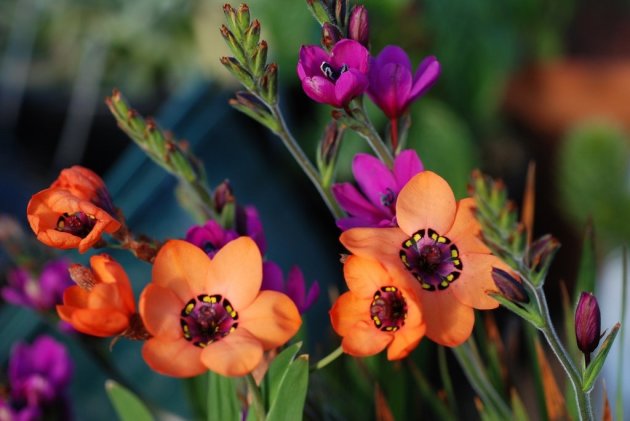
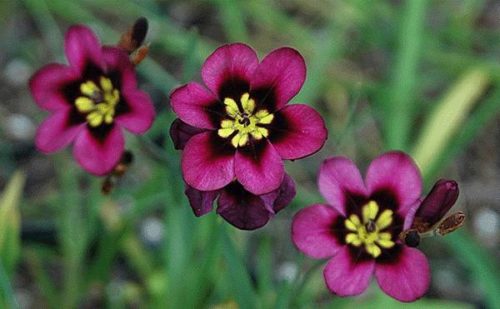
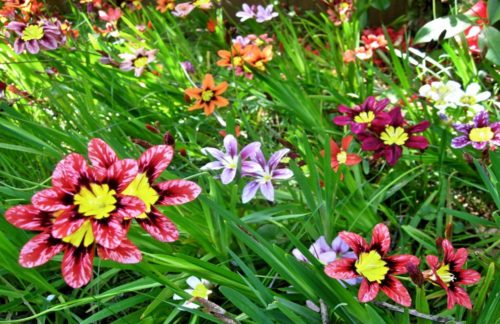
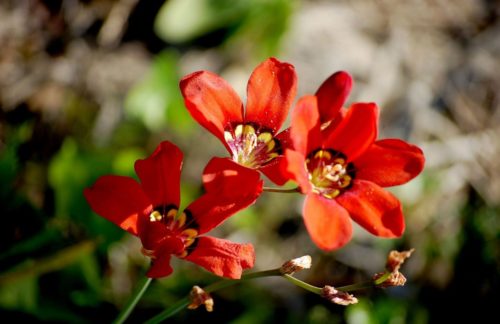
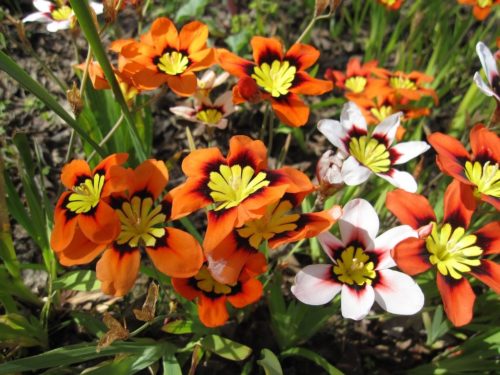
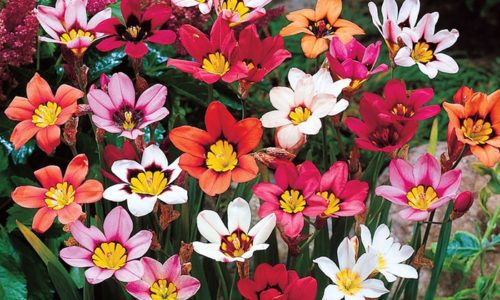
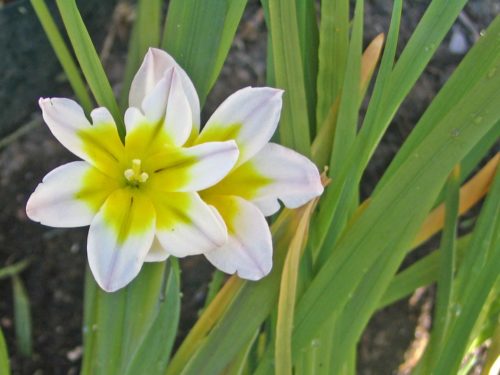
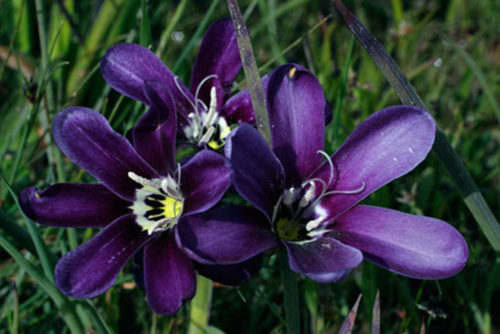
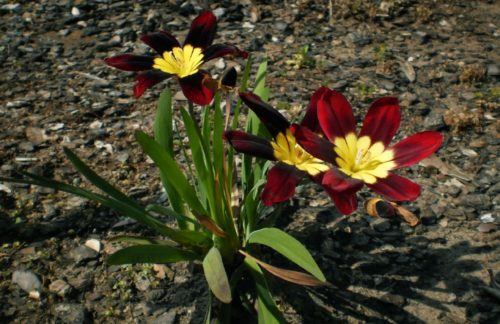
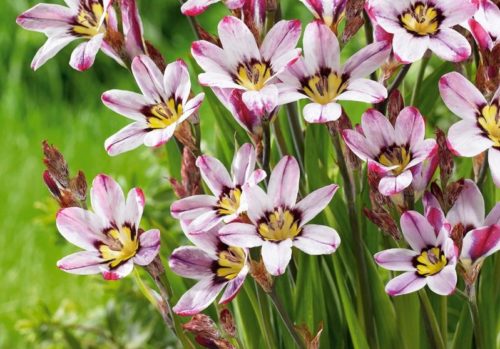
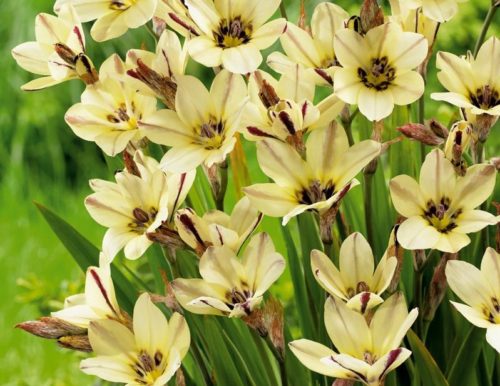
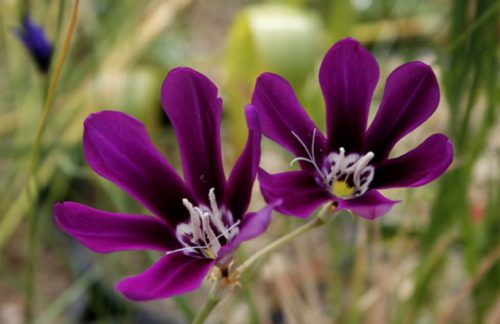
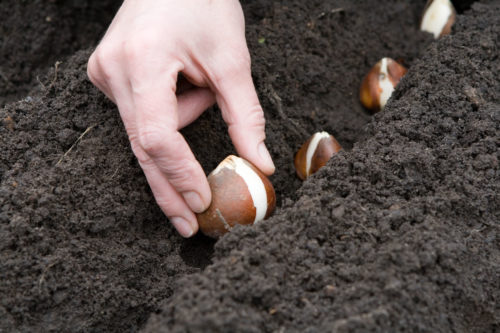
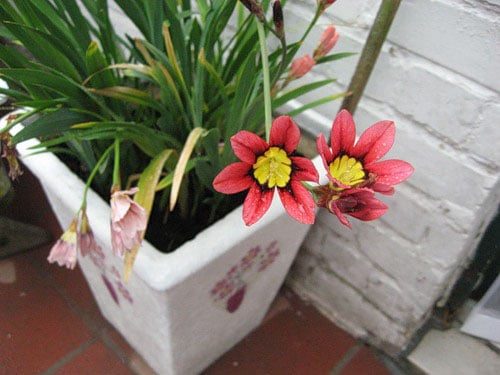
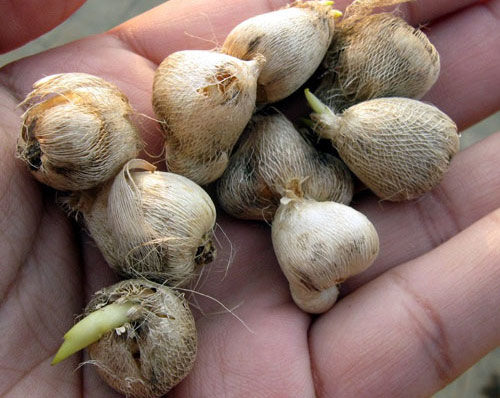
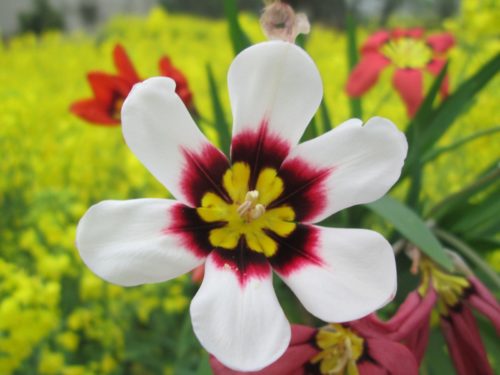
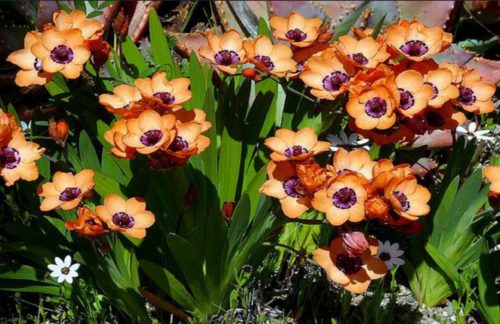
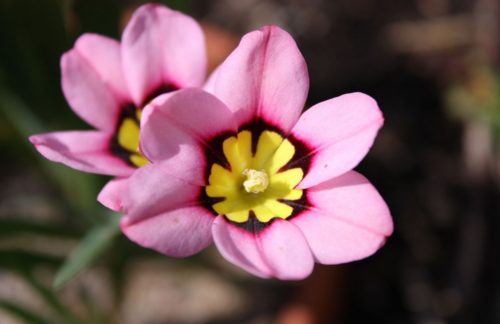
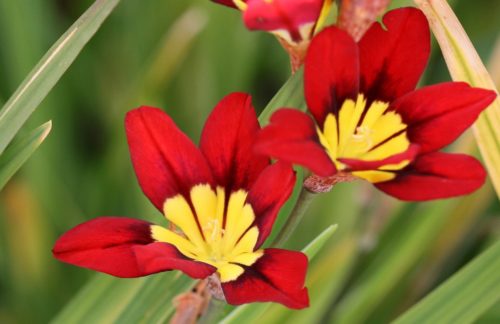












 Start a discussion ...
Start a discussion ...